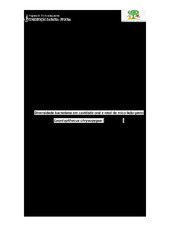| dc.contributor.author | Fatoretto, Bruna Talita | |
| dc.date.accessioned | 2019-08-12T18:21:48Z | |
| dc.date.available | 2019-08-12T18:21:48Z | |
| dc.date.issued | 2019-05-22 | |
| dc.identifier.citation | FATORETTO, Bruna Talita. Diversidade bacteriana em cavidade oral e retal de mico-leão-preto Leontopithecus chrysopygus (Mikan, 1823). 2019. Dissertação (Mestrado em Conservação da Fauna) – Universidade Federal de São Carlos, São Carlos, 2019. Disponível em: https://repositorio.ufscar.br/handle/ufscar/11711. | * |
| dc.identifier.uri | https://repositorio.ufscar.br/handle/ufscar/11711 | |
| dc.description.abstract | The black lion tamarin, Leontopithecus chrysopygus is an endangered primate species, restricted to fragments of the Atlantic Forest in the State of São Paulo, Brazil. Information on microbiology, epidemiology and pathogens transmission are scarce and the aim of this study was to describe the bacterial diversity in the oral and rectal cavities of free-ranging (in situ) and captive (ex situ) animals. For identification of bacterial isolates, we used Matrix-assisted laser desorption / ionization time-of-flight mass spectrometry (MALDI-TOF), Gram stain and Polymerase Chain Reaction (PCR). A total of 249 bacterial isolates were studied and the results revealed a different profile of bacterial diversity between in situ and ex situ animals. In total, 19 bacteria genera were found and the most frequent genera in captive animals were: Escherichia, Neisseria, Streptococcus, Proteus, Enterobacter; and in free-ranging animals were: Bacillus, Staphylococcus, Enterococcus and Pseudomonas. There are no reports in the literature regarding the identification of Cronobacter sp., Delftia sp., Kocuria sp., Lysinibacillus sp., Neisseria sp., Paenibacillus sp. in Leontopithecus chrysopygus, which are presented in this study for the first time. Bacterial with pathogenic potential were found and this work demonstrated the importance of identifying these microorganisms for future management and conservation practices. | eng |
| dc.description.sponsorship | Outra | por |
| dc.language.iso | por | por |
| dc.publisher | Universidade Federal de São Carlos | por |
| dc.rights.uri | Acesso aberto | por |
| dc.subject | Conservação | por |
| dc.subject | Leontopithecus chrysopygus | por |
| dc.subject | Patogênico | por |
| dc.subject | Microbiologia | por |
| dc.subject | Manejo de animais silvestres | por |
| dc.subject | Mico-leão-preto | por |
| dc.subject | Diversidade bacteriana | por |
| dc.subject | Conservation | eng |
| dc.subject | Pathogenic | eng |
| dc.subject | Wildlife husbandry | eng |
| dc.subject | Bacterial diversity | eng |
| dc.subject | Microbiology | eng |
| dc.subject | Black lion tamarin | eng |
| dc.title | Diversidade bacteriana em cavidade oral e retal de mico-leão-preto Leontopithecus chrysopygus (Mikan, 1823) | por |
| dc.title.alternative | Blacterial diversity in oral and retal cavity of black lions tamarins, Leontopithecus chrysopygus (Mikan, 1823) | eng |
| dc.type | Dissertação | por |
| dc.contributor.advisor1 | Ramos, Patrícia Locosque | |
| dc.contributor.advisor1Lattes | http://lattes.cnpq.br/7542477918045216 | por |
| dc.description.resumo | O mico-leão-preto, Leontopithecus chrysopygus, é uma espécie de primata ameaçada de extinção, restrita a fragmentos de Mata Atlântica no Estado de São Paulo, Brasil. Informações sobre a microbiologia, epidemiologia e transmissão de patógenos são escassas e o objetivo deste estudofoi descrever a diversidade bacteriana da cavidade oral e retal de animais de vida livre (in situ) e cativos(ex situ). Para identificação dos isolados bacterianos, utilizou-se espectrometria de massa de dessorção / ionização por laser assistida por matriz (MALDI-TOF), coloração de Gram e Reação em Cadeia da Polimerase (PCR). Um total de 249 isolados bacterianos foram estudados e os resultados demonstraram perfil diferente da diversidade bacteriana entre animais in situ e ex situ. No total, 19 gêneros bacterianos foram encontrados e os gêneros mais freqüentes em animais de cativeiro foram: Escherichia, Neisseria, Streptococcus, Proteus, Enterobacter; e em animais livres foram: Bacillus, Staphylococcus, Enterococcus e Pseudomonas. De acordo com o dados relatados na literatura, até o momento não foram encontrados relatos de Cronobacter sp., Delftia sp., Kocuria sp., Lisinibacillus sp., Neisseria sp., Paenibacillus sp. em Leontopithecus chrysopygus, os quais são relatados neste estudo pela primeira vez. Bactérias com potenciais patogênicos foram encontradas e este trabalho demonstrou a importância da identificação desses microrganismos para futuras práticas de manejo e conservação da espécie. | por |
| dc.publisher.initials | UFSCar | por |
| dc.publisher.program | Programa de Pós-Graduação em Conservação da Fauna - PPGCFau | por |
| dc.subject.cnpq | CIENCIAS BIOLOGICAS::MICROBIOLOGIA | por |
| dc.subject.cnpq | CIENCIAS BIOLOGICAS::ZOOLOGIA | por |
| dc.subject.cnpq | CIENCIAS BIOLOGICAS | por |
| dc.description.sponsorshipId | Fundação Parque Zoológico de São Paulo | por |
| dc.ufscar.embargo | Online | por |
| dc.publisher.address | Câmpus São Carlos | por |
| dc.contributor.authorlattes | http://lattes.cnpq.br/8968513355716027 | por |
